Shopify vs BigCommerce
Discover which of these industry giants is best for your online store

Although most website builders are quite versatile and support various types of websites, some of the best website builders are designed specifically for ecommerce.
In our Shopify vs BigCommerce comparison, we take a look at two of the world’s leading online store creation platforms. Shopify is extremely popular among beginners. With Shopify, you will have access to an intuitive management dashboard containing countless attractive tools. The editor is a little simple, but it supports rapid, cost-effective store creation.
On the other hand, BigCommerce targets larger companies and established entrepreneurs. It offers advanced custom solutions for enterprise-level clients, and it’s known for its excellent scalability. However, ecommerce beginners may find the sheer number of features overwhelming.
We look at their main features, performance, support, and prices to help you decide which is the best ecommerce website builder for your needs.
Shopify: top store builder with advanced tools
With Shopify, over 1 million merchants worldwide have built an online store in minutes. Advantages include a wide selection of third-party apps and clutter-free site-building, excellent marketing and security tools, and a built-in shopping cart and checkout manager.
BigCommerce: cutting-edge ecommerce builder
BigCommerce utilizes drag-and-drop technology to offer advanced ecommerce site construction. Top features include payment gateway options, app integrations and plug-ins, SEO analytics, and adaptive themes.
Shopify vs BigCommerce: Features
Shopify and BigCommerce are known as two of the most advanced ecommerce platforms on the market. Both offer a huge range of features and cater to stores of various sizes. Below, we analyze how they stack up against each other.
Templates
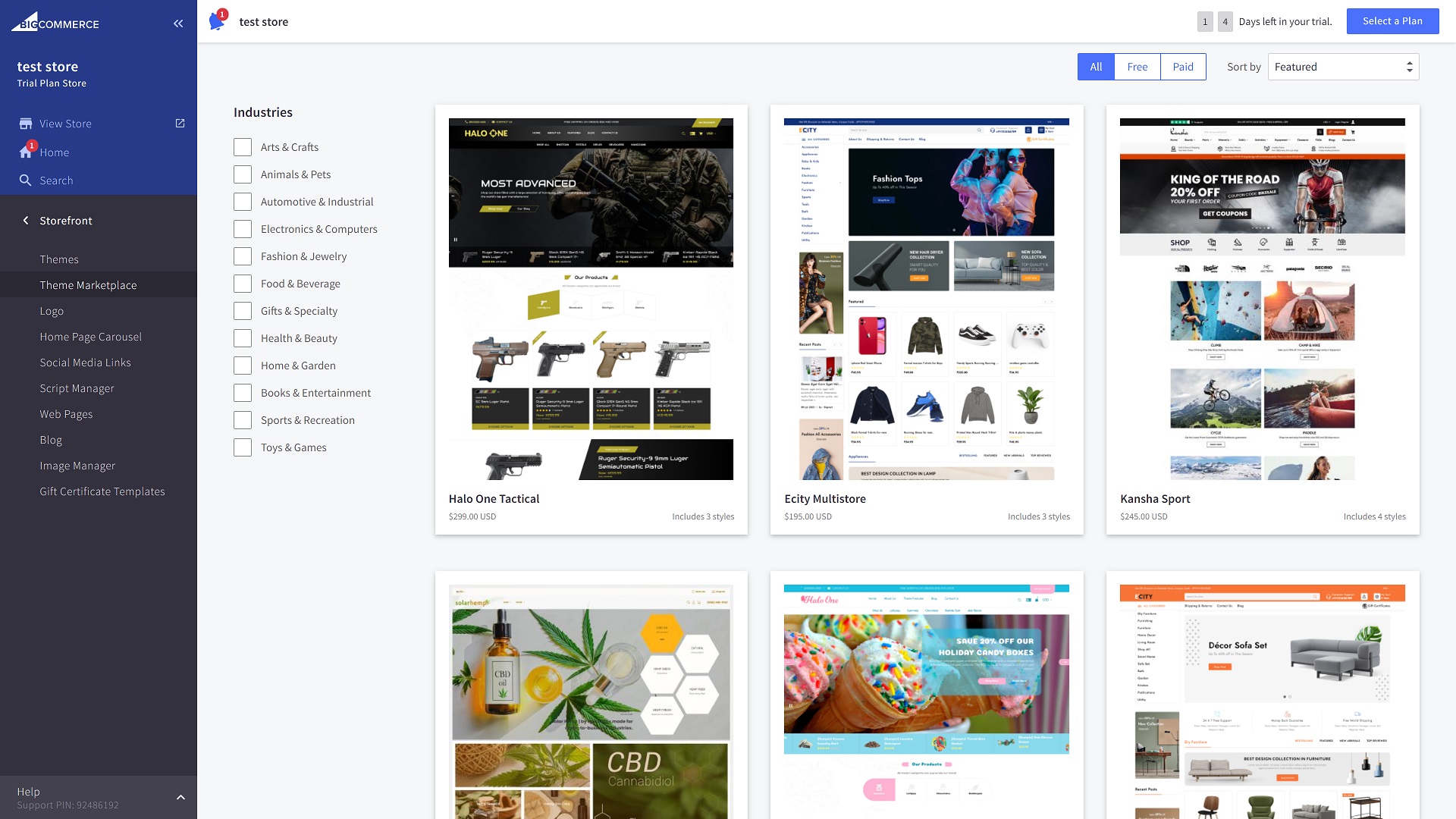
Shopify has 81 templates to select from in the Shopify Themes store. Of these, 10 are free and 71 will require you to dig into your wallet. Prices for the premium themes range from $150 to $350. You can also upload custom themes to Shopify. These can be developed from scratch or purchased from a third-party marketplace.
The BigCommerce Theme Marketplace is surprisingly similar. It boasts a larger selection of 189 themes, but only 12 of them are free. The premium themes will set you back anywhere from $150 to $300, making them similarly priced to Shopify’s. And like Shopify, BigCommerce enables you to upload custom themes from third-party sources.
Get instant access to breaking news, the hottest reviews, great deals and helpful tips.
App marketplace
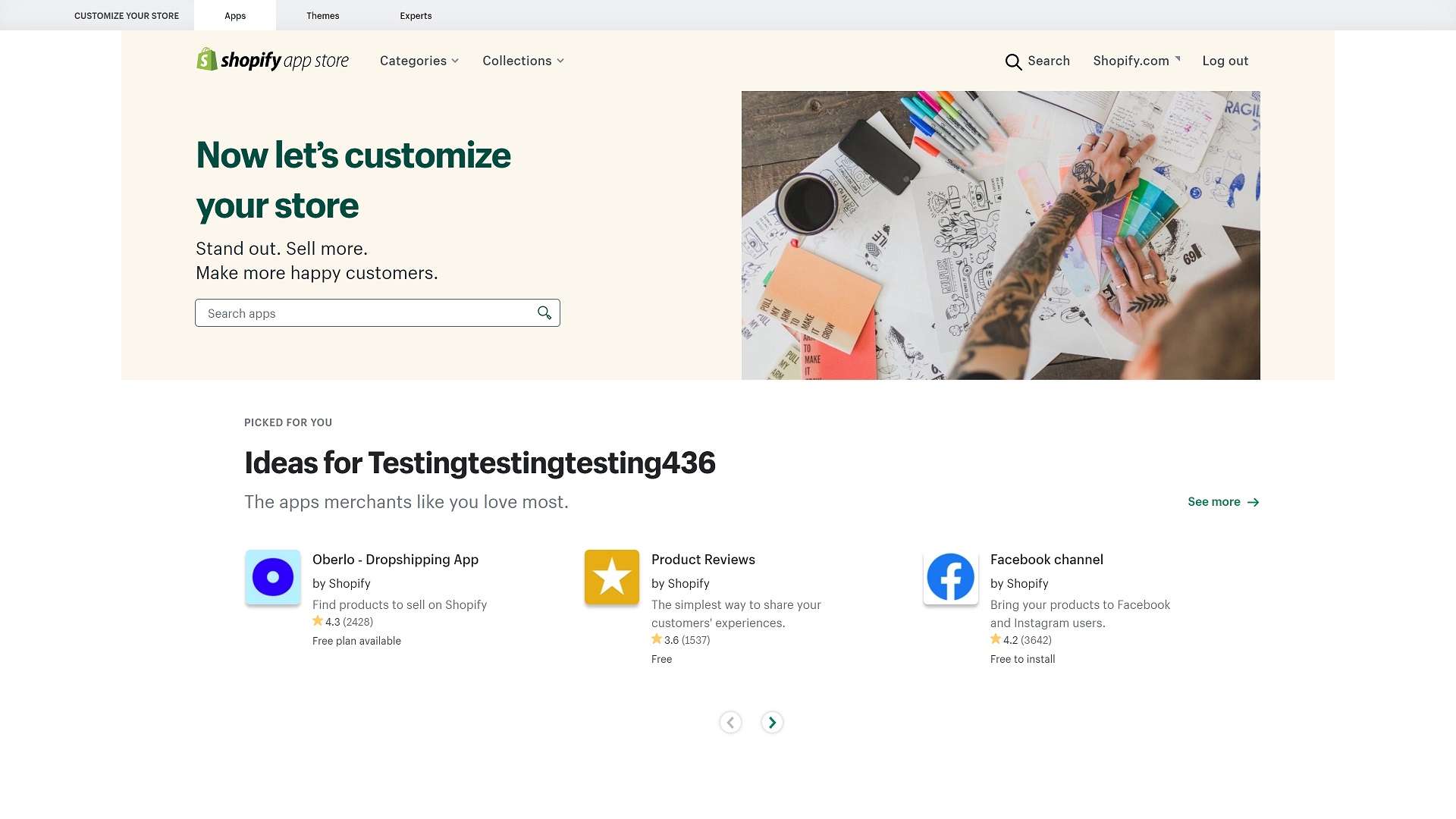
Shopify and BigCommerce both have large app marketplaces where you can find an array of extensions. These include everything from drop shipping integrations to product review plugins and marketing tools.
Shopify’s App Store contains over 4,200 apps. There’s a load of free and premium options, and many come with free trials or tiered billing. The BigCommerce app store is smaller, with just over 800 extensions. However, there’s still plenty of value to be found here, and you should be able to find something that makes managing your online store easier.
Sales channels
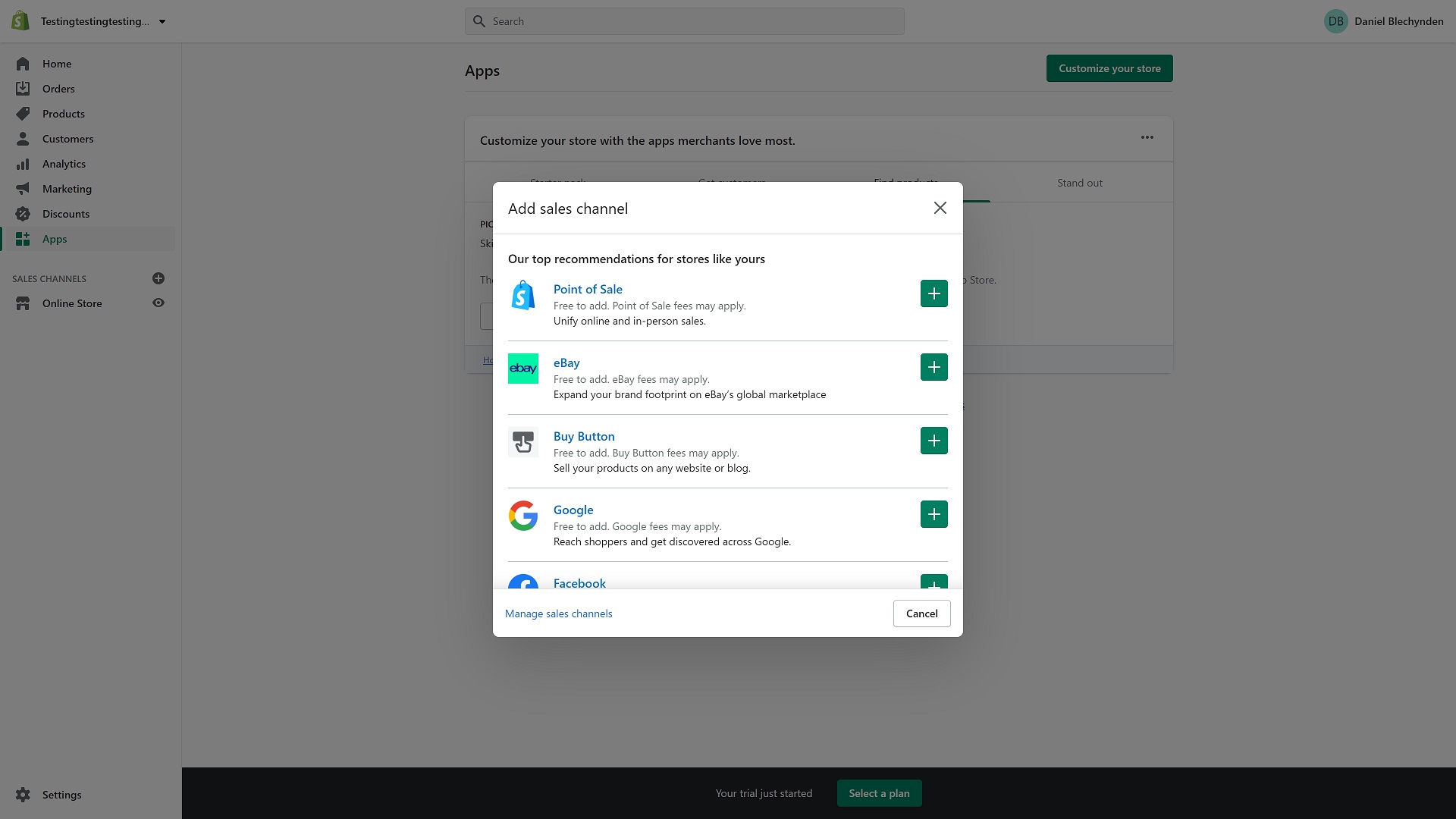
Like most leading ecommerce platforms, Shopify and BigCommerce enable you to sell via multiple sales channels. Your store will likely be one of your main revenue sources, but the others are still very useful when used right!
With Shopify, you can connect to a Point of Sale (POS) system to link your ecommerce and brick-and-mortar sales. You can add a buy button to an existing website or blog. Various social media integrations, including Facebook and Pinterest, are available to help you sell directly to your followers. It’s even possible to link to large marketplaces like eBay and Amazon.
BigCommerce is similar. It offers POS connections through Clover POS, along with similar third-party marketplace and social media integrations. However, it doesn’t offer a buy button to add to a separate website. Because of this, Shopify may be a better option for businesses that sell products via multiple websites.
Analytics and reporting tools

Both Shopify and BigCommerce offer advanced reporting and analytics tools to help you understand your store’s performance.
BigCommerce presents data in a clear, easy-to-understand manner. You can filter by sales channel, date, and other criteria. You’ll be able to find information about your overall marketing efforts, orders, customers, purchase funnels, in-store searches, and more.
Shopify’s analytics dashboard is just as good. It presents similar information and enables you to generate custom reports. One thing that stands out is Shopify’s marketing campaign analytics, which enable you to track the results of specific campaigns. BigCommerce doesn’t offer anything that’s comparable.
Shopify vs BigCommerce: Performance
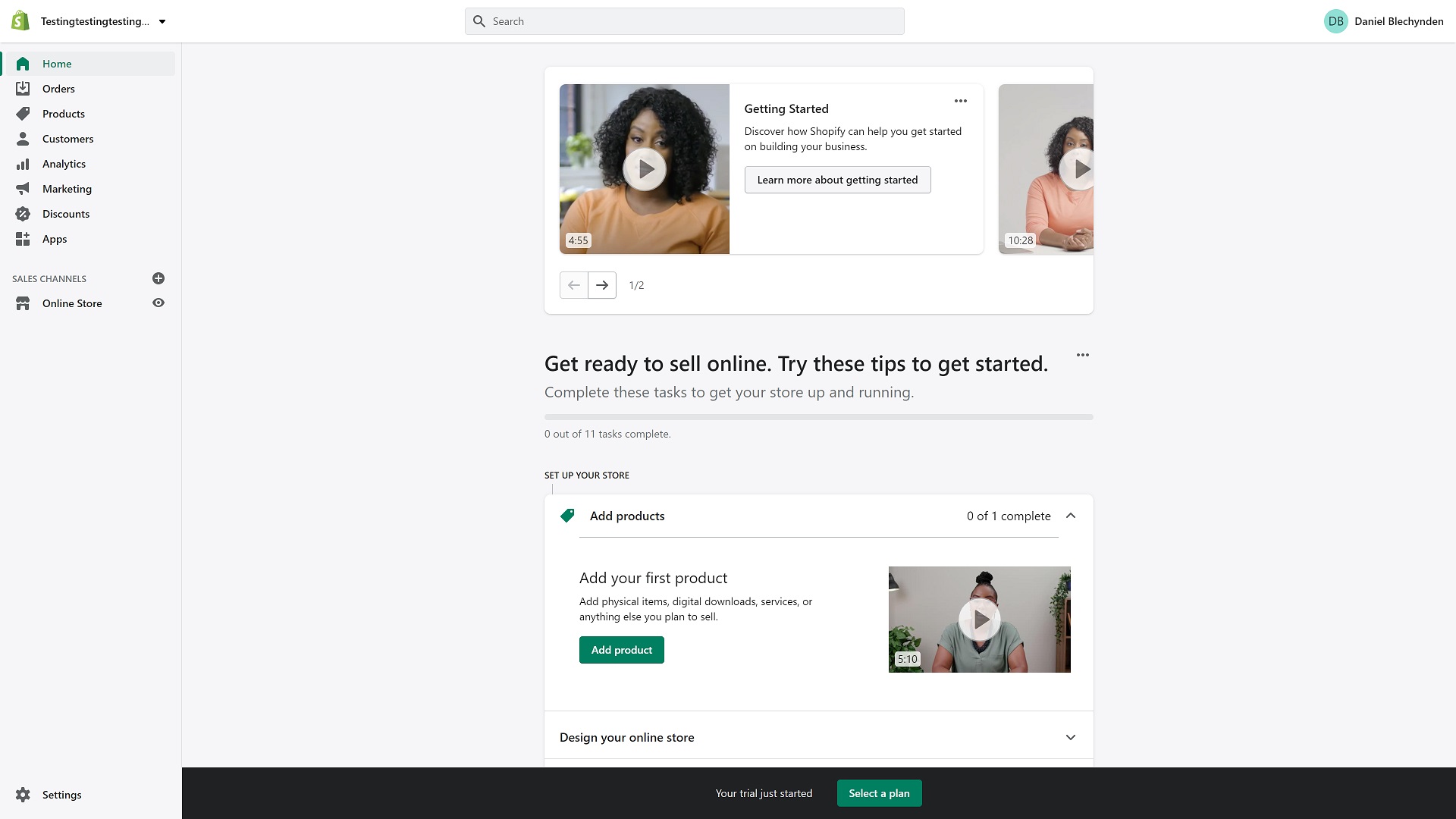
To test the performance of Shopify and BigCommerce, we created a simple store with each and tested various management and customization processes.
Getting started with Shopify is easy. All you need to do is hit the "Start free trial" button on the company’s website, and enter an email address, password, and store name to create an account. You’ll be asked about your experience level, so that Shopify can provide you with relevant educational material. You’ll then be taken directly to the management dashboard.
BigCommerce’s sign-up process is similar to Shopify’s. Once you create an account, you should be able to access your dashboard within minutes.
Here’s where Shopify and BigCommerce begin to differ. The BigCommerce management dashboard is very well designed, but it’s packed so full of advanced tools that it was hard to know where to start.
On the other hand, Shopify provides a clear checklist of the steps you need to take to get your store off the ground. The very first thing you’ll see is a link to a video outlining how to get started, which we found very useful.
Shopify also makes ongoing customer and inventory management straightforward. On the left of your main dashboard, you will find links to various management portals. You can even add apps for extra functionality.
With BigCommerce, you will also have access to advanced product and customer management tools. But we found it difficult to get the hang of using them, and you may run into trouble if you don’t have much tech experience.
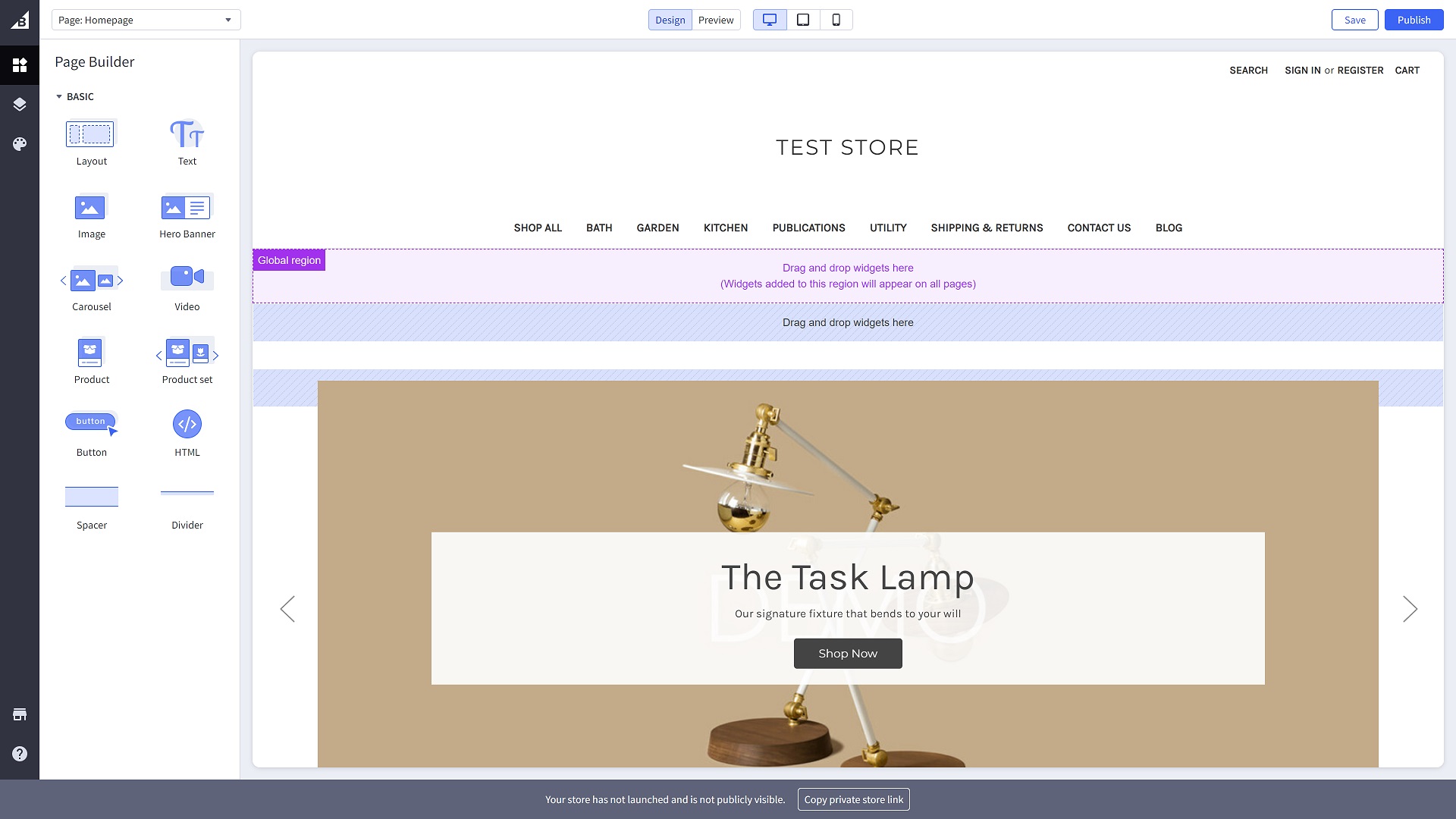
Next, we tested how easy it was to design a store. With Shopify, you will be confined by the layout of the template you select. The store builder enables you to add and remove sections on each page, but you won’t be able to fine-tune things like element positioning or size.
We also found the Shopify editor to be a little clunky. It’s slow to load, and the editing options are quite confusing to navigate. However, you will be able to change global design settings easily via the Theme Settings menu, which we appreciate.
On the other hand, BigCommerce’s editor is much more intuitive and easier to use. As with Shopify, you will be somewhat constrained by your template, but you’ll have much more flexibility. Widgets can be dragged and dropped into position, and you can add custom HTML blocks if required. There are loads of excellent global design tools here, too.
Overall, BigCommerce wins on the performance front. Shopify is targeted at beginners, and has a clear management interface, but its editor just doesn’t impress.
Shopify vs BigCommerce: Support
Customer support is crucial for ecommerce beginners. If you run into a problem, you’ll want the ability to resolve it rapidly before it causes more significant issues.
Shopify’s customer service appears excellent on the surface, with 24/7 email, live chat, and phone support. But when we tested it, we found that the support agents weren’t very knowledgeable. And at times, when it’s too busy, you will have trouble actually getting connected with an agent. You may have to wait upwards of 30 minutes for a response.
BigCommerce also offers 24/7 live chat, email, and phone support. But unlike Shopify, it seems the company actually employs customer service agents who know their stuff. Overall, we had a much better experience interacting with the BigCommerce support team than the Shopify one.
Both platforms offer a suite of self-help resources. BigCommerce has a decent support center with a number of useful resources, including video guides, user docs, and step-by-step tutorials.
But when it comes to self-help resources, Shopify comes out ahead due to the sheer number and quality of the resources available. For example, you can access in-depth tutorials and guides in the Shopify Help Center which outline things in a clear, beginner-friendly way. On top of this, Shopify’s popularity means that the internet is packed full of even more information to help you out.
Shopify vs BigCommerce: Pricing and plans
Shopify and BigCommerce have very similar pricing structures. Shopify has a 14-day free trial that you can use to test the platform, while BigCommerce has a 15-day trial. Neither requires you to enter payment details. However, BigCommerce offers annual subscription discounts, while Shopify doesn’t.
With Shopify, you will have access to three main plans, a custom-priced enterprise-level option, and a cheap WordPress plugin. The Shopify Lite plugin costs $9 a month, and enables you to add a buy button to your existing website. BigCommerce has no comparable product, but it also has three main plans and a custom-priced enterprise-level option.
The cheapest Basic Shopify plan ($29 a month) enables you to create your own store with up to two staff members and four inventory locations. You will have access to all basic selling tools, but advanced reports will be disabled.
BigCommerce’s Standard plan ($29.95 a month) is directly comparable to this in price. It supports up to $50,000 in sales a year. However, advanced tools like customer segmentation, an abandoned cart saver, and product filtering are absent.
The Shopify plan ($79 a month) and BigCommerce’s Plus plan ($79.95 a month) are also comparable in terms of price, as are the Advanced Shopify ($299 a month) and BigCommerce’s Pro ($299.95 a month) plan.
One of the main differences between the two platforms is that BigCommerce offers 0% transaction fees with third-party payment gateways. Shopify’s fees range from 0.5% to 2%, depending on your plan. Shopify also limits the number of staff accounts you can have, while BigCommerce enables unlimited accounts with all plans.
Both platforms also offer advanced, custom-price enterprise solutions for high-end online stores. It’s difficult to separate the two in terms of price, and in the end, you will need to make a decision based on the features you require.
| Header Cell - Column 0 | Shopify | BigCommerce |
|---|---|---|
| WordPress plugin | $9 a month | ✖ |
| Entry Level | $29 a month | $29.95 a month |
| Small Business | $79 a month | $79.95 a month |
| Professional | $299 a month | $299.95 a month |
| Enterprise | Custom priced | Custom priced |
Shopify vs BigCommerce: Verdict
It’s easy to see why Shopify and BigCommerce are two of the world’s top-rated ecommerce platforms. They both bring a lot to the table, and it’s virtually impossible to say that one is better overall than the other.
Both offer a wide range of advanced features. BigCommerce has almost triple the number of templates as Shopify, but Shopify has a better app market. Both platforms offer similar sales channels, but Shopify comes out on top when it comes to analytics and reporting.
Shopify is beginner-friendly and has a more intuitive dashboard layout, but both are great for stores of all sizes. BigCommerce’s customer service stands out above Shopify’s due to its more knowledgeable support agents.
Furthermore, BigCommerce’s editor is more flexible and easier to use than Shopify’s. The two platforms are very similarly priced, though, and both offer a free trial that you can use to get started.
At the end of the day, both platforms are excellent. Shopify is better for beginners, and it has more apps and better analytics. But BigCommerce remains an excellent option for larger stores and those that plan to scale quickly.
Further reading on website builders
Whether you choose Shopify or BigCommerce, make sure you read our guide outlining how to build an ecommerce website if you want to create an online store. If you go with Shopify, we've also devised a step-by-step walkthrough on how to build a website with Shopify.
Many of the best ecommerce builders also number among the best small business website builders; it's worth seeing which providers rank highly across the board, in case you need features covering different areas.
You might prefer to utilize WordPress; in that case, you'd need one of the best website builders for WordPress, and the best WordPress hosting offered by one of the best web hosting services. There's also plugin options such as WooCommerce for selling on WordPress.

Daniel is a freelance copywriter with over six years experience writing for publications such as TechRadar, Tom’s Guide, and Hosting Review. He specializes in tech and finance, with a particular focus on website building, web hosting, and related fields.


